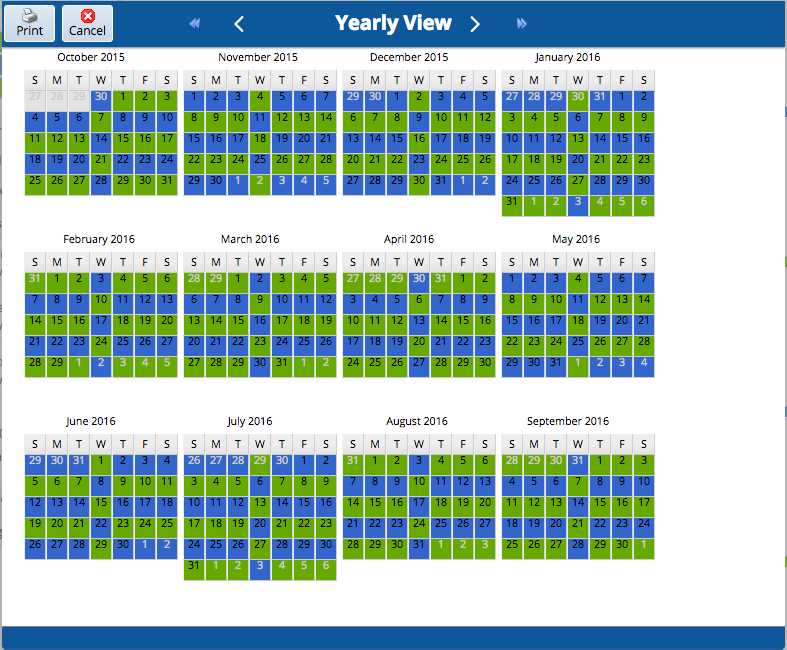
Effective time-sharing arrangements between parents require careful planning to ensure a balanced approach to child care. Organizing a clear and structured system can help both parties navigate their responsibilities while fostering a positive environment for the child. Clear schedules and agreed-upon timelines eliminate confusion and provide stability, making transitions smoother for everyone involved.
When it comes to coordinating parental duties, flexibility is key, but so is consistency. A well-organized framework allows parents to track and manage their time efficiently, reducing stress and minimizing conflict. Whether it’s a rotating schedule or fixed visitation, having a visual reference to outline each parent’s allocated time with the child is invaluable.
Creating an easy-to-follow system is an essential part of maintaining harmony. By breaking down the planning process into manageable steps, both parents can align their expectations and keep their focus on what matters most–the well-being of their child. An adaptable structure that accommodates unforeseen changes also ensures that the plan remains effective in the long run.
This guide will help you design an organized approach to time-sharing that caters to your unique needs. With a practical framework in place, you can minimize conflicts and create a supportive co-parenting relationship that prioritizes your child’s happiness and stability.
Understanding Joint Custody Arrangements
In family law, shared parenting arrangements involve both parents actively participating in the decision-making and day-to-day care of their child. This approach aims to balance responsibilities, allowing both individuals to contribute to their child’s upbringing, while also providing the child with a sense of stability and support from both parents. These types of agreements are designed to prioritize the well-being of the child, ensuring that their emotional and physical needs are met consistently.
While such arrangements can take various forms, the key principle is that both parents have a substantial role in the child’s life. This includes equal or near-equal time spent with the child, as well as joint involvement in important decisions regarding education, healthcare, and general welfare. Communication between parents is essential for success, as flexibility and cooperation are often required to manage the complexities of shared responsibility.
One of the primary benefits of this structure is that it encourages collaboration between parents, minimizing conflict and fostering a supportive environment for the child. It can also provide the child with a stronger sense of connection to both parents, reducing feelings of loss or alienation. However, it requires careful planning and clear guidelines to ensure that both parties are on the same page, helping to prevent misunderstandings or disagreements in the future.
Effective communication and a clear understanding of each parent’s role are crucial for navigating these arrangements. When both parents commit to making the child’s best interests a priority, the arrangement can be a positive and enriching experience for everyone involved.
What is Joint Custody?
When two parents share responsibility for their child’s upbringing, ensuring that both have equal involvement in important decisions and day-to-day care, this arrangement is known as co-parenting. It seeks to provide the child with a balanced experience, allowing them to maintain close relationships with both caregivers while fostering a sense of stability in their life.
Key Features of Shared Parenting Arrangements
- Both parents contribute to decision-making regarding education, healthcare, and other key aspects of the child’s life.
- Each parent is actively involved in daily routines, including time spent with the child during weekends, holidays, and vacations.
- The child has the opportunity to develop strong emotional bonds with both caregivers, despite living in two separate households.
Benefits of Shared Responsibility for Children
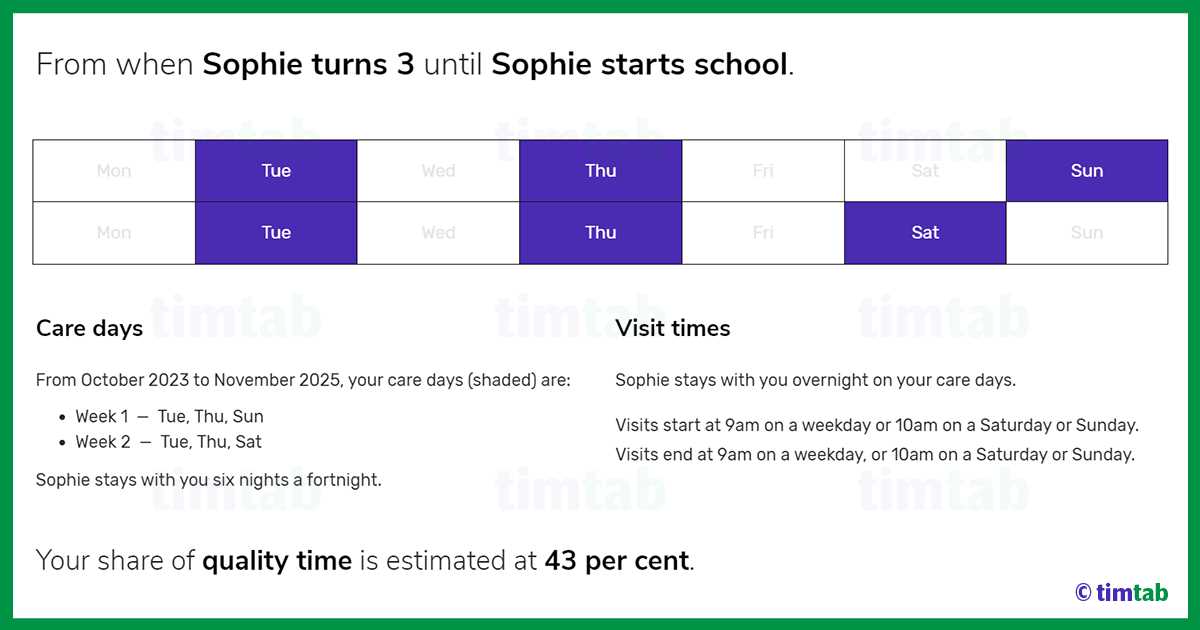
- Improved emotional well-being due to consistent and supportive relationships with both parents.
- Reduced feelings of anxiety or confusion by maintaining regular interaction with both parental figures.
- Encouragement of positive relationships, modeling collaboration and respect between parents for the child.
Importance of a Custody Calendar
Managing time between two households can be a complex task without a clear structure. Having a well-organized schedule ensures that both parents remain on the same page and that the child’s needs are consistently met. A visual tool for tracking time-sharing arrangements helps prevent misunderstandings and fosters smoother communication. It provides clarity on who is responsible for the child at any given moment, reducing confusion and conflict.
Facilitating Communication and Reducing Conflict
A detailed schedule serves as an effective communication tool between parents. It minimizes the chance of disagreements by establishing clear expectations in advance. By having everything laid out, both parties can plan their personal and professional activities without the fear of overstepping boundaries. This structure helps to eliminate one of the most common sources of tension in co-parenting relationships.
Ensuring Consistency for the Child
Consistency is key to a child’s well-being. When a routine is in place, children benefit from knowing where they will be and who they will be with at all times. This predictability brings comfort and stability, which are essential for their emotional development. A clear schedule ensures that both parents remain committed to the child’s needs and provide a balanced environment in each home.
How to Create a Shared Schedule
Establishing a balanced and organized plan for time-sharing is essential for maintaining harmony and clarity in a situation where both parties are involved in the care and upbringing of a child. A clear schedule allows both individuals to know their responsibilities and commitments, reducing conflicts and misunderstandings. It’s important to create a flexible and realistic approach that works for everyone involved, including the child.
To begin, open communication is key. Both parties should discuss their preferences, obligations, and any potential obstacles. This includes work schedules, personal commitments, and the child’s needs. Flexibility is equally important, as life events may occasionally require adjustments to the agreed plan.
Next, creating a visual outline of the arrangement can significantly improve understanding and reduce errors. Use a system that is easy to follow, whether it’s a shared online document, a physical planner, or a scheduling app. Make sure that it clearly shows who is responsible for each period, be it daily, weekly, or monthly.
Lastly, don’t forget to regularly review and adjust the plan. What works one month may need tweaking the next. Openly address any concerns and keep the child’s well-being as the central priority. With cooperation and mutual respect, a well-structured arrangement can lead to a more peaceful and organized routine for everyone.
Benefits of Using a Template
Utilizing a structured framework for organizing shared time arrangements offers numerous advantages for all parties involved. By relying on a predefined format, individuals can avoid confusion and ensure smoother communication. It provides clarity, reduces potential conflicts, and supports better decision-making.
Efficiency and Time-Saving: A ready-made structure eliminates the need to start from scratch each time plans need to be adjusted. This allows for faster updates and less time spent managing schedules, making it easier to focus on other important matters.
Consistency and Clarity: Having a uniform system in place helps both parties follow the same set of guidelines, leading to fewer misunderstandings. It establishes a clear, predictable approach to managing shared responsibilities, which can greatly improve overall coordination.
Improved Communication: When both individuals follow the same organization method, it fosters transparent discussions about any necessary adjustments. Clear visual representation of plans ensures everyone is on the same page, making the process less stressful and more collaborative.
Stress Reduction: With a straightforward, pre-designed layout, it becomes easier to track important events and avoid overlaps or misunderstandings. This reduces unnecessary tension and encourages a more harmonious interaction between those involved.
In conclusion, using a well-designed framework for managing time commitments offers simplicity, reliability, and peace of mind for everyone engaged in shared responsibilities.
Key Elements of a Custody Plan
A well-structured parenting arrangement is essential for ensuring that children maintain strong relationships with both parents, while also providing clear guidelines for their care and well-being. Such a plan should address various aspects of the children’s lives, from daily routines to long-term decisions. It aims to reduce confusion and conflict, promoting a healthy environment where both parents can be actively involved in their child’s upbringing, regardless of their living situation.
Physical and Legal Decision-Making
The first critical aspect of any arrangement involves defining which parent is responsible for the child’s physical care at different times, as well as who holds the authority to make important decisions about the child’s education, healthcare, and other significant matters. Clear distinctions between these roles help avoid misunderstandings and ensure that both parents stay informed and engaged in their child’s life.
Time Allocation and Flexibility
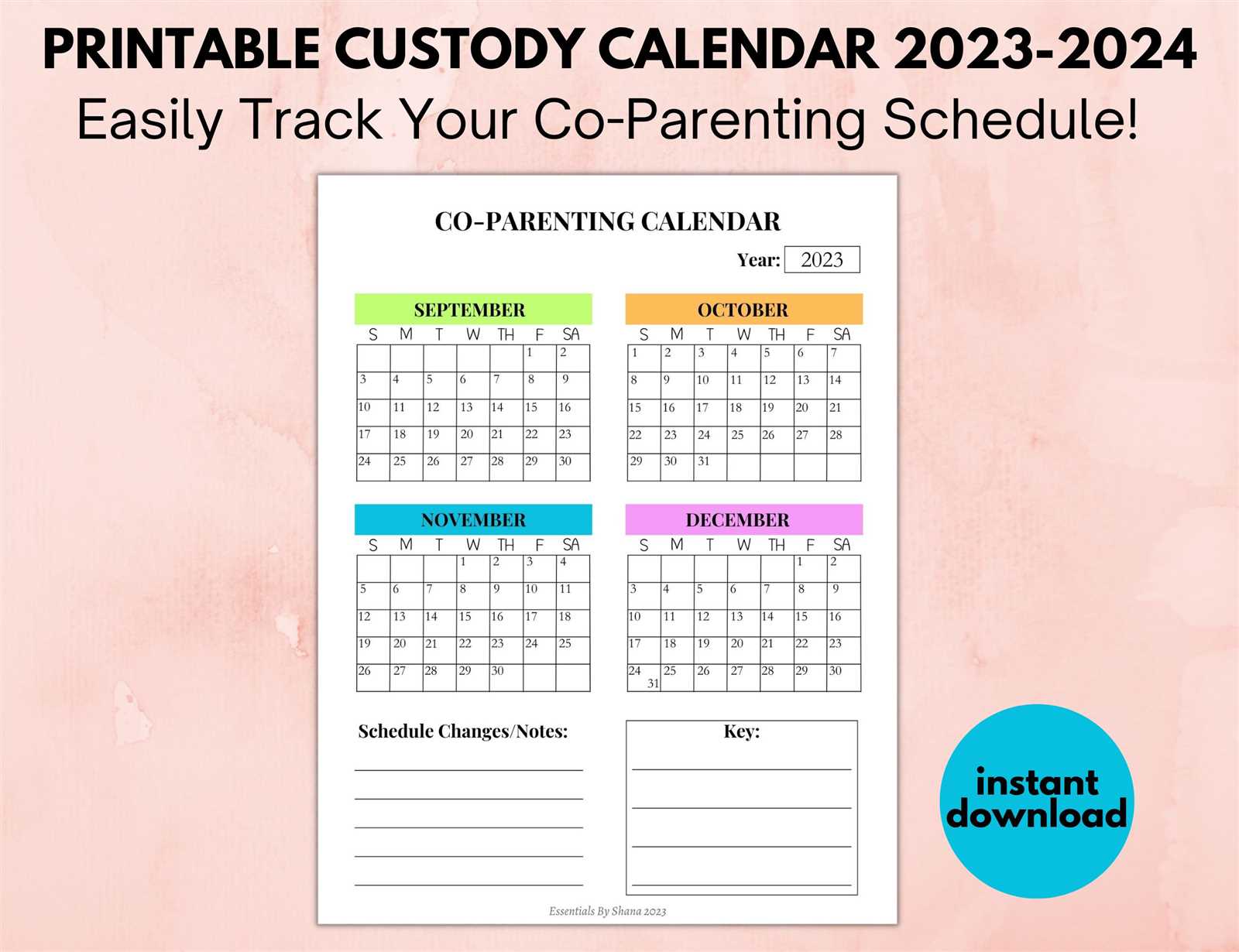
Another important component is establishing a clear division of time. This includes specifying how the child will spend time with each parent and on what days, during holidays, weekends, and school breaks. Flexibility should also be considered to accommodate emergencies, changes in the child’s needs, or unexpected circumstances, allowing the arrangement to adapt over time while still meeting the child’s best interests.
Dealing with Holidays in Joint Custody
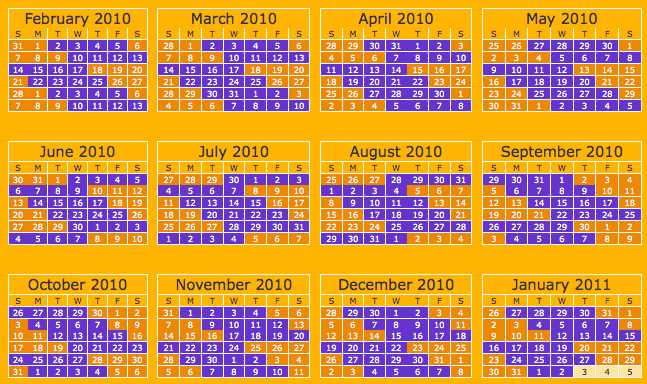
Holidays can be a particularly challenging time for parents who share responsibility for their children. These special occasions often carry emotional weight, and the need for balance between both households becomes even more crucial. The goal is to ensure that the child experiences a sense of stability and joy, without feeling torn between different traditions or schedules. Planning and clear communication are key to navigating these times smoothly.
Establishing Fair Arrangements is essential when determining who will spend time with the child during holiday periods. This might involve alternating years, dividing the holiday in half, or creating a rotating schedule for major celebrations. Flexibility is important, as some holidays may be more significant to one parent, and adjusting to these nuances can help avoid conflict.
Celebrating Different Traditions is another consideration. If each parent has their own set of customs or ways of marking special occasions, it can be enriching for the child to experience both. This requires collaboration and understanding between the parents to ensure that neither party feels excluded or less important. Respecting each other’s traditions while fostering new ones together can provide the child with a broader sense of cultural identity.
Effective Communication plays a major role in making sure that both parents are on the same page. Regular discussions about upcoming holidays allow parents to plan well in advance, addressing potential conflicts before they arise. It’s important that these conversations remain focused on what’s best for the child, while being open to compromise when necessary.
Ultimately, the key to handling holidays in shared parenting arrangements is creating a predictable, loving environment for the child, where both parents are actively involved, and the focus remains on building positive memories.
Flexibility in Parenting Schedules
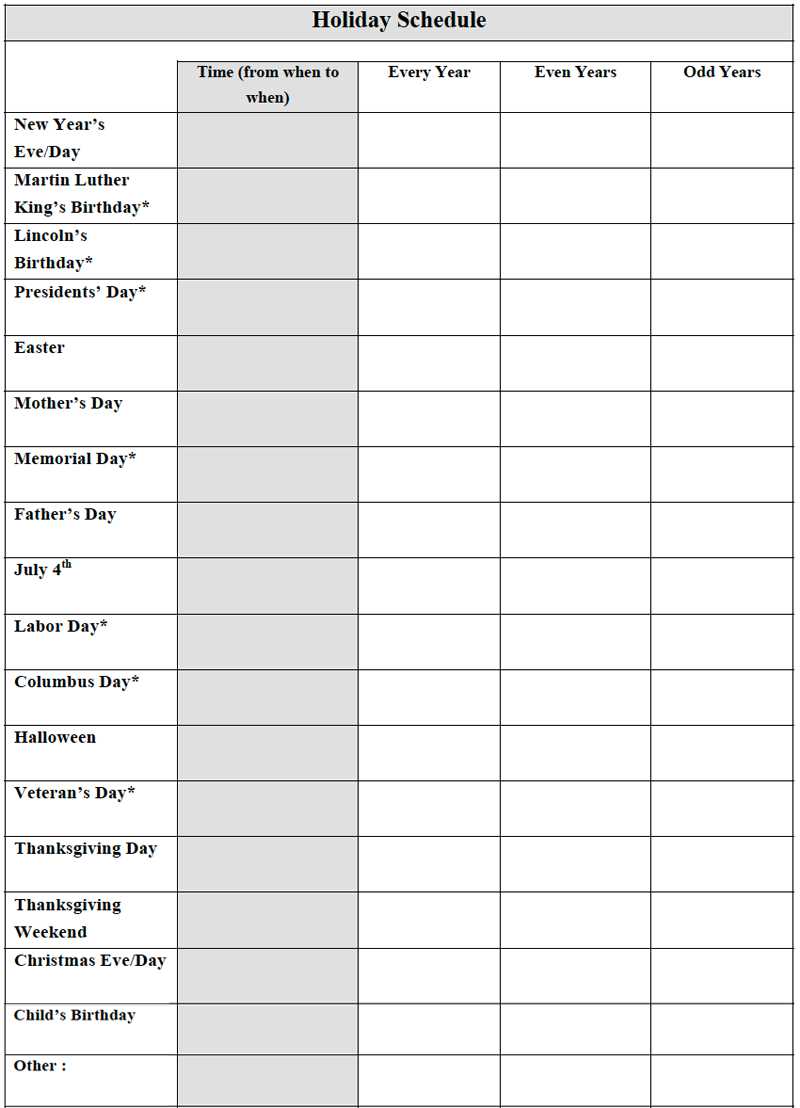
When parents share the responsibility of raising a child, balancing their own needs with those of the child can be a challenge. Flexibility is crucial in this process, as life circumstances may change unexpectedly. A well-structured yet adaptable approach allows both parents to provide consistent care while accommodating their personal schedules and priorities.
Flexible arrangements foster a supportive environment where both parents remain involved, despite competing obligations. Being able to adjust plans as needed, without rigid structures, ensures that the child’s emotional and physical well-being is prioritized. The key to success lies in creating an environment where both parents can coordinate effectively while managing the demands of work, social life, and personal commitments.
- Communication: Open lines of communication are vital for ensuring that both parents are aware of any changes or challenges. Regular discussions help to prevent misunderstandings and promote cooperation.
- Adaptability: A successful parenting strategy allows for adjustments in case of unexpected events, such as illness or work emergencies, without disrupting the child’s routine too much.
- Consistency: While flexibility is important, maintaining some level of consistency is key to providing a stable environment for the child.
- Mutual Respect: Recognizing and respecting each other’s time and commitments is fundamental in making flexible arrangements work. Both parents must be willing to accommodate each other’s schedules where possible.
Ultimately, finding the right balance between structure and adaptability enables both parents to share in the experience of raising their child, despite the challenges that come with busy and changing lives.
Tools for Organizing Custody Calendars
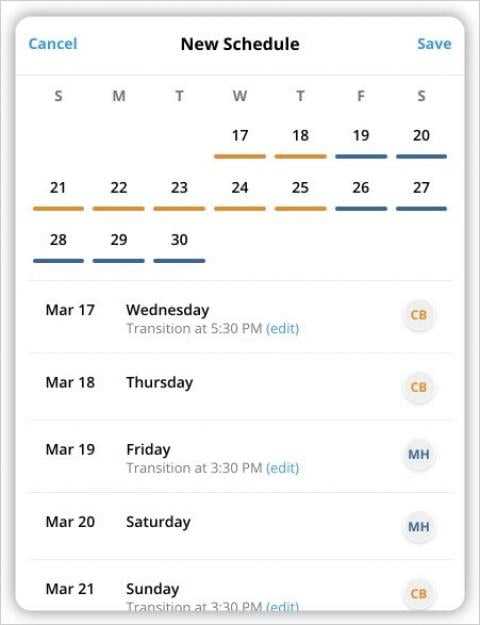
Effective planning and scheduling are essential for families navigating shared responsibilities. Various tools can simplify the process, helping parents track time, manage tasks, and ensure clear communication. These resources support families in organizing days, minimizing confusion, and fostering smoother transitions between households.
Digital Platforms
Many online services offer powerful features for managing schedules and events. By using apps or web platforms, parents can easily share and update plans in real-time. Some platforms even provide reminders, alerts, and the option to sync with other calendars, making it easier to stay on top of important dates.
Printable Organizers
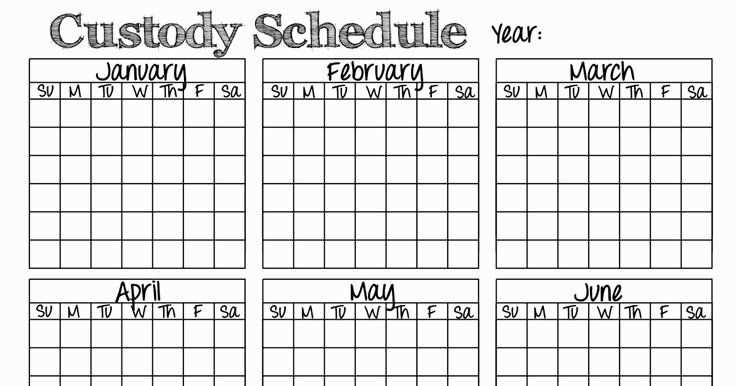
For those who prefer physical copies, printable planners can be a great option. These allow for personalized schedules and can be customized with specific times, activities, and notes. Having a visual reference on hand can be especially helpful when managing complex routines or when digital devices are not preferred.
Customizable Options allow for specific needs and preferences. Some tools offer templates that can be tailored to individual requirements, making it easier to adapt to the unique situation of each family.
Effective organization through these tools can help reduce misunderstandings and ensure that each parent is aware of their responsibilities and obligations. Whether digital or paper-based, finding the right solution can provide peace of mind and promote cooperation between co-parents.
How to Handle Exchanges Between Parents
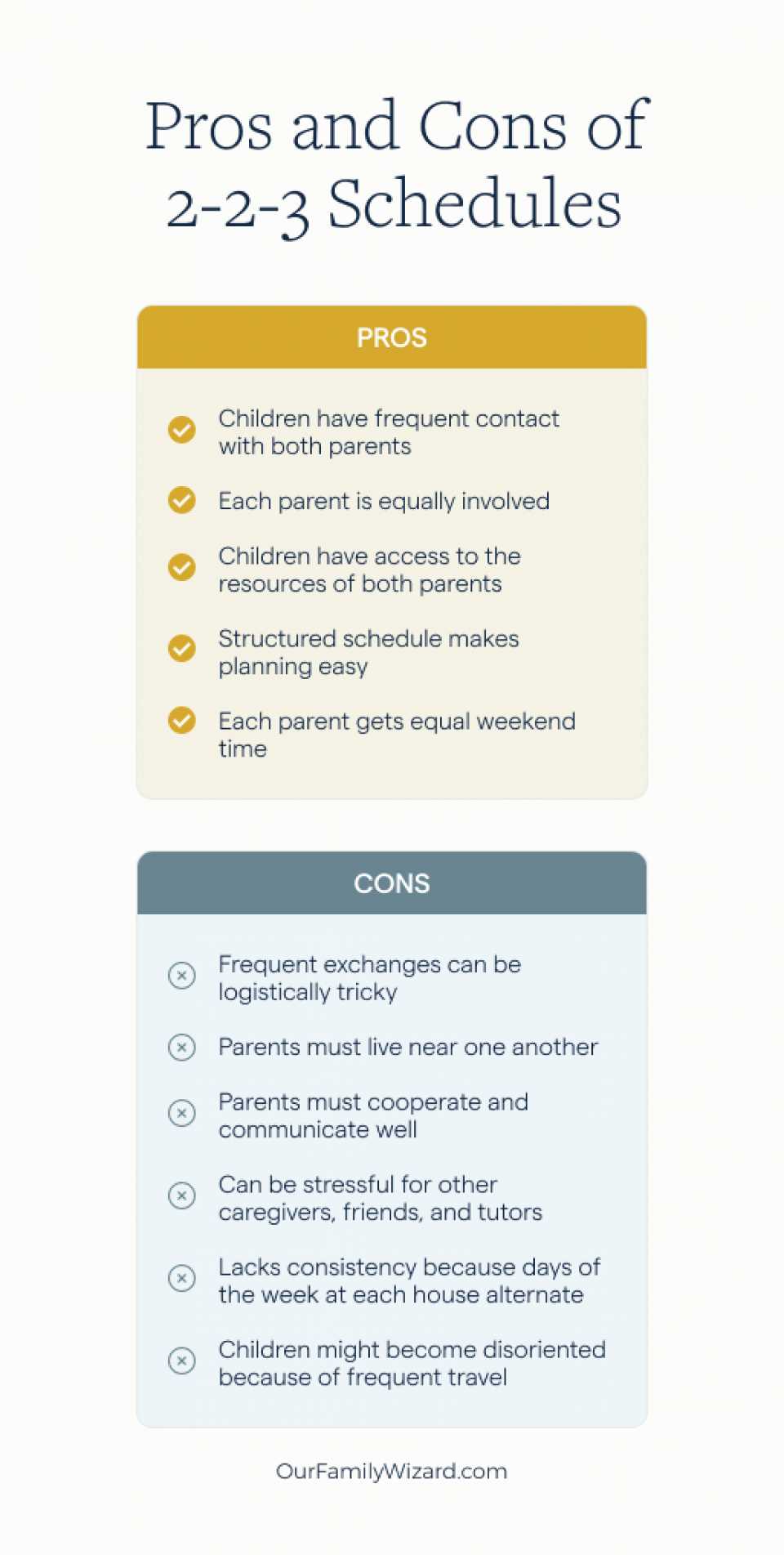
Managing transitions between parents requires clear communication and careful planning. These exchanges, often happening at set intervals, should be as smooth as possible to ensure the child feels secure and both parents are on the same page. Establishing a structured approach helps avoid misunderstandings and reduces stress for everyone involved.
Here are some strategies for managing these moments effectively:
- Clear Timing: Define precise pick-up and drop-off times to avoid confusion and minimize delays. Stick to agreed-upon times as much as possible to provide stability for the child.
- Neutral Locations: Choose neutral, public spaces for exchanges if possible. This helps maintain a peaceful atmosphere and minimizes potential conflict.
- Consistent Routines: Try to maintain a predictable routine for exchanges. This predictability offers comfort to the child and helps both parents plan their schedules.
- Stay Flexible: While consistency is important, flexibility is also key. Life events may require changes, so keeping an open line of communication can help handle unexpected situations.
- Be Respectful: Even when emotions run high, it’s crucial to approach the exchange with respect and professionalism. Children often pick up on tensions, and a calm atmosphere benefits everyone.
By incorporating these tips into your approach, you can help make transitions between parents as smooth and positive as possible for your child.
Co-Parenting Communication Strategies
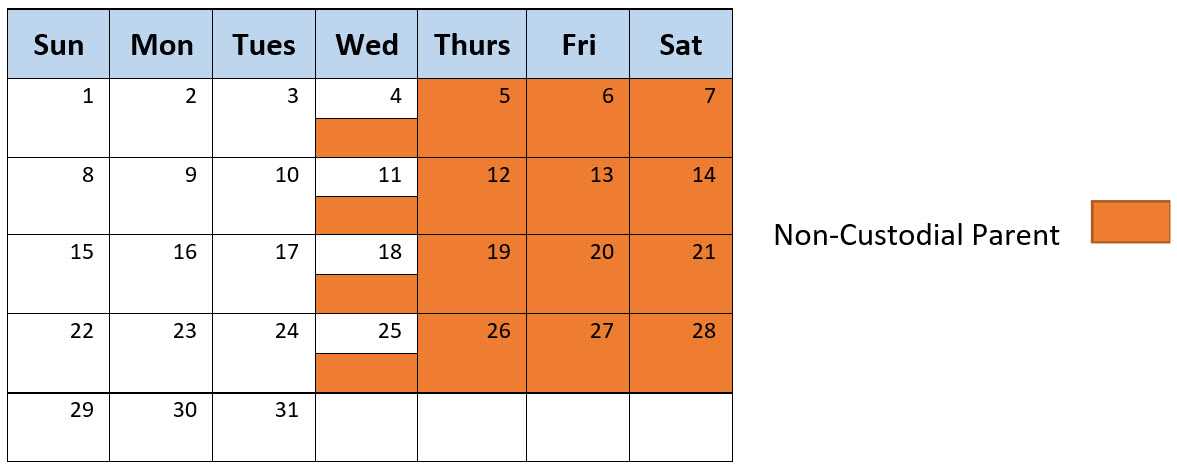
Effective communication between parents who share the responsibility of raising a child is essential for the well-being of the child and for maintaining a positive co-parenting relationship. Both parents need to find ways to stay informed, aligned on key decisions, and manage any differences constructively. Establishing clear and respectful communication channels helps avoid misunderstandings, minimizes conflicts, and ensures both parents are equally involved in their child’s life.
One of the most important aspects of successful co-parenting is creating a structured system for sharing information and updates. This system should be organized, consistent, and free from emotional triggers. It may include regular check-ins, shared documentation, or digital platforms to keep both parents on the same page about the child’s activities, needs, and any logistical matters.
Here are a few strategies to improve communication:
| Strategy | Description |
|---|---|
| Regular Updates | Consistent sharing of important information such as appointments, school events, and health updates ensures that both parents stay informed without needing to ask repeatedly. |
| Respectful Tone | Keeping all interactions polite and neutral, especially when discussing sensitive topics, helps prevent escalation of conflicts and supports cooperative dialogue. |
| Shared Platforms | Using apps or digital tools to track schedules, expenses, or other relevant details makes it easier to manage responsibilities and avoid confusion. |
| Open and Honest Communication | Being transparent about feelings, concerns, and decisions fosters trust and ensures that both parents are equally involved in decision-making. |
By implementing these communication strategies, both parents can ensure a smoother partnership in raising their child, despite living in separate households. The goal is always to create an environment where the child’s needs are prioritized above any personal conflicts.
Managing Travel and Long-Distance Custody
Coordinating schedules between parents who live far apart can present unique challenges, particularly when it comes to facilitating regular visits. With distance playing a significant role, the logistics of travel, timing, and communication require careful planning to ensure the child’s well-being and comfort during transitions. Efficient management of long-distance parenting arrangements demands flexibility, clear communication, and proactive organization to avoid conflicts and misunderstandings.
Traveling frequently between two homes can be tiring for children, especially when the trips are long or involve complex travel arrangements. To mitigate stress, it’s essential to arrange travel during school breaks or other natural pauses in the child’s routine. Clear and consistent communication between parents about travel dates, transportation options, and any potential changes ensures everyone is on the same page and minimizes confusion.
In cases where air travel or long car journeys are required, the logistics of coordinating flights or arranging for pick-ups and drop-offs may also require additional support. Parents should be realistic about the distance involved and make arrangements that are not only practical but also comfortable for the child. Alternating the responsibility for travel costs and making sure that both parents are involved in planning can help maintain fairness and balance in the arrangement.
Ultimately, the goal is to establish a routine that minimizes disruptions to the child’s life while maximizing the quality of time spent with each parent. Flexibility is key, as schedules and circumstances may change. Regularly revisiting the travel plan to ensure it continues to meet the needs of the child and both parents is essential for maintaining a positive, workable arrangement over time.
Adjusting the Schedule Over Time
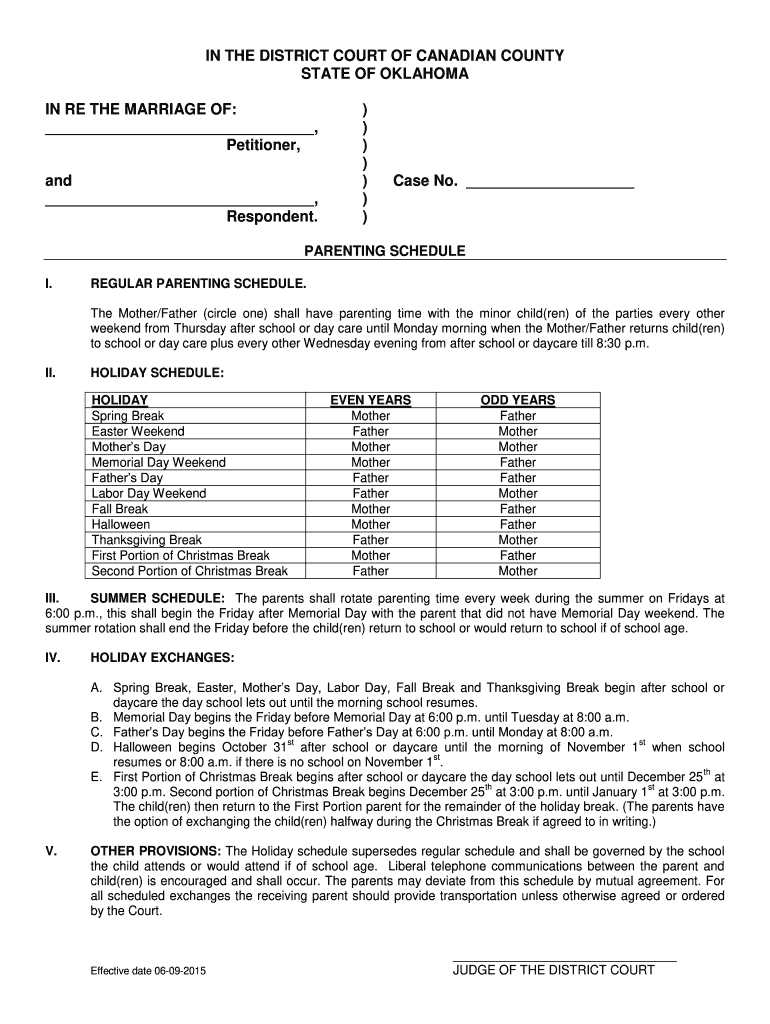
As circumstances change, it’s important to adapt parenting arrangements to fit new situations. Flexibility is key in ensuring that both parties can continue to meet the needs of the child while balancing their personal obligations. Over time, modifications may be necessary due to shifts in work schedules, school commitments, or the child’s evolving preferences and requirements. This process ensures that everyone remains on the same page and that the child’s well-being remains a top priority.
One of the most crucial factors in adjusting the routine is open communication between all involved. It’s essential to discuss any proposed changes early and in a calm, collaborative manner. Effective planning can help prevent misunderstandings and ensure that the child’s best interests are always considered. Parents may find that revisiting the arrangement every few months or after significant life events helps to keep things balanced and working smoothly.
It is also important to acknowledge the child’s growing independence. As children age, their preferences may evolve, and they might have different ideas about how much time they want to spend with each parent. Incorporating their voice into these decisions can help them feel more engaged in the process and foster better relationships with both caregivers. However, any adjustments should still prioritize stability, routine, and consistency to avoid unnecessary disruptions in the child’s life.
Legal Considerations in Custody Plans
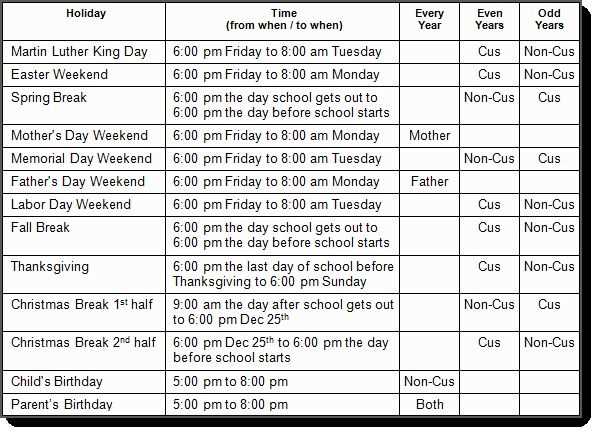
When designing a parenting schedule, it’s essential to keep in mind several legal aspects that can affect both the parents and the child. A well-structured agreement ensures that the rights and responsibilities of each party are clear and enforceable. Legal requirements vary depending on jurisdiction, but they typically address the child’s best interests, the parents’ abilities to cooperate, and their individual circumstances. Navigating these aspects requires a balance between flexibility and adherence to the law, ensuring the arrangement supports the child’s emotional and physical well-being.
Compliance with Local Laws
One of the most important factors in creating an effective parenting arrangement is making sure it complies with local regulations. Each state or country has its own set of rules regarding how parents can share time with their children. These rules dictate the minimum requirements for time allocation, decision-making authority, and conflict resolution. Understanding the legal framework is crucial to avoid complications and ensure the arrangement is recognized by the courts.
Enforceability and Modification
Another key consideration is how enforceable the plan is. It’s essential to establish a clear process for addressing potential violations and a way to modify the arrangement if circumstances change. Whether due to a change in living situation, work commitments, or the child’s needs, having a legally sound method for modifying the agreement can prevent future disputes. In many cases, a formal agreement that includes provisions for modification is more likely to be accepted by the court, ensuring long-term stability for all parties involved.
Parenting Time and Child’s Needs
Ensuring that a child’s emotional, physical, and developmental needs are met requires careful attention to how time is spent with each parent. The balance of time shared between caregivers plays a pivotal role in fostering a stable and supportive environment. It is crucial to consider the child’s age, temperament, and routine when determining the best structure for their well-being.
Recognizing the Child’s Developmental Stages
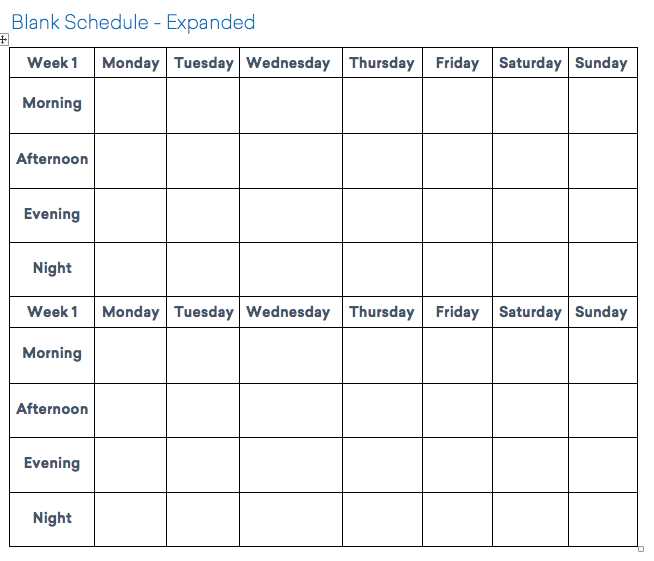
Children’s needs evolve as they grow. Younger children often thrive on consistent routines and frequent contact with both parents, while older children may seek more autonomy and flexibility in their schedules. Understanding these stages helps in creating a structure that supports their growth, emotional security, and sense of belonging with both caregivers.
Consistency and Stability in Parenting
Consistency is key to a child’s sense of security. Regularity in visits and interactions with both parents helps a child develop trust and feel confident in their relationships. Maintaining stable routines between homes, such as meal times, bedtimes, and homework expectations, offers emotional comfort and reduces feelings of confusion or stress.
At the same time, the quality of the time spent with each parent is just as important as the quantity. Engaging in meaningful activities that strengthen the parent-child bond can be more beneficial than a rigid schedule that lacks personal connection.
In summary, a flexible and thoughtful approach to dividing time between parents ensures that the child’s emotional, psychological, and physical needs are met, leading to a healthier and more balanced upbringing.
Dispute Resolution for Custody Issues
When parents or guardians disagree on matters concerning the care and well-being of their children, it is essential to have a clear process for resolving these conflicts. Without an effective method in place, disputes can escalate, potentially affecting the child’s stability. A well-structured approach to resolving disagreements ensures that both parties can reach a fair and balanced decision that prioritizes the child’s needs.
Methods of Conflict Resolution
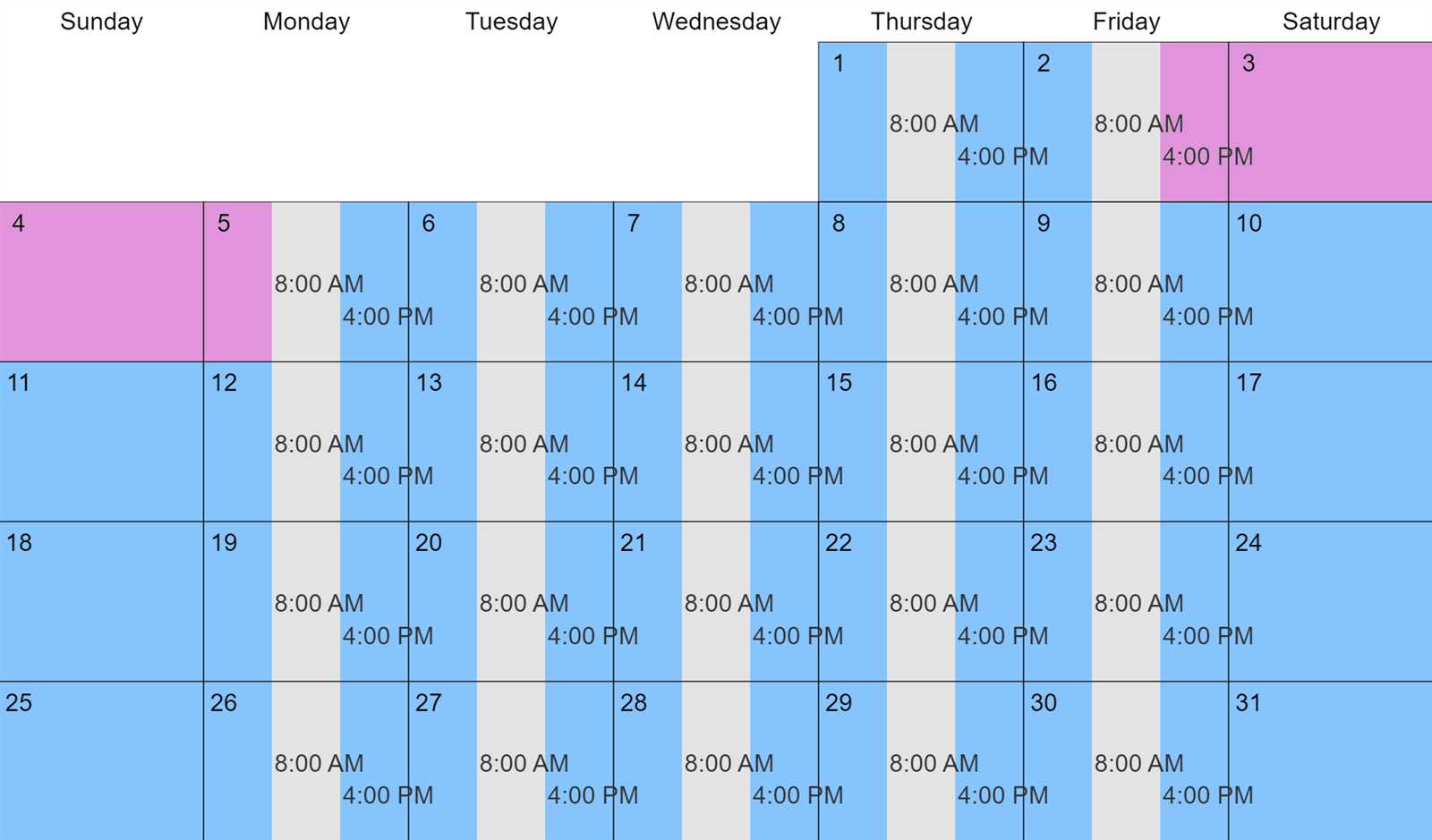
Various approaches can help manage and resolve disagreements. Negotiation is often the first step, where both parties communicate directly to reach an agreement. If direct negotiation fails, mediation is a common next step. In mediation, a neutral third party facilitates discussion, helping both sides understand each other’s perspectives and work towards a compromise. In more complex or entrenched cases, arbitration or court intervention may be necessary, but these options are typically considered only after all other avenues have been explored.
Benefits of Early Dispute Resolution
Addressing conflicts early on not only helps avoid prolonged legal battles but also supports a healthier environment for the child. Early resolution encourages cooperative parenting and reduces the emotional toll on both the child and the parents. Maintaining an open line of communication and using non-confrontational methods to solve problems can lead to more sustainable solutions and foster mutual respect between the parents.
Technology for Co-Parenting Support
Modern tools and applications are transforming how separated parents manage their responsibilities and maintain effective communication. These digital solutions offer practical assistance in organizing daily tasks, coordinating schedules, and fostering better cooperation between parents. By streamlining the logistics of shared parenting, technology helps reduce conflict, minimize misunderstandings, and ensure both parents remain actively involved in their children’s lives.
Features of Effective Co-Parenting Apps
- Shared Scheduling: Syncing and coordinating schedules to avoid confusion and ensure both parents are aware of appointments, school events, and extracurricular activities.
- Communication Tools: Secure messaging platforms that promote clear and respectful communication, helping to keep sensitive discussions private and organized.
- Expense Tracking: Features to manage and share financial responsibilities, such as child-related expenses, ensuring transparency between parents.
- Document Sharing: Secure spaces for storing important legal documents, school reports, medical records, and other shared resources.
Benefits of Technology in Shared Parenting
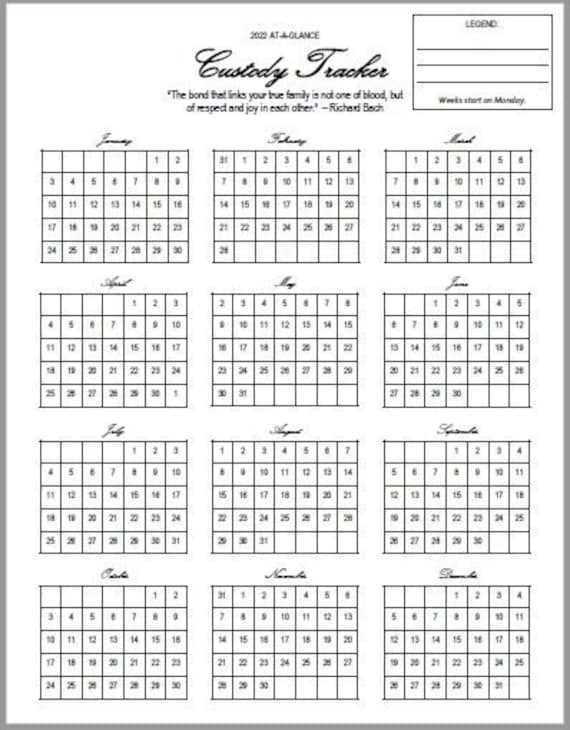
- Reduced Conflict: Clear communication through digital platforms can reduce misunderstandings and minimize friction between parents.
- Increased Involvement: Parents can stay actively engaged in their children’s lives even when they don’t live together, helping to maintain a consistent routine.
- Time Efficiency: Automated reminders and easy access to shared information save time, making it easier for parents to manage their busy lives.
- Greater Accountability: Digital logs and tracking features create a record of all interactions, providing a neutral third-party view in case of disputes.
Common Mistakes to Avoid in Custody Plans
When creating a parenting plan, it’s essential to avoid certain pitfalls that can lead to confusion, frustration, or conflict. While the goal is to ensure the well-being of the child, some decisions can inadvertently complicate the process. Understanding these common errors can help parents create a more effective and harmonious arrangement for everyone involved.
1. Lack of Flexibility
One of the most frequent mistakes parents make is creating a rigid schedule that doesn’t allow for adjustments. While consistency is important, life circumstances can change, such as work schedules, school events, or family emergencies. A plan that’s too inflexible can lead to unnecessary tension when unexpected situations arise. Including provisions for flexibility can help avoid conflicts and ensure the plan remains practical over time.
2. Failing to Address Communication and Decision-Making
Another common oversight is not setting clear guidelines for how parents will communicate and make decisions regarding the child’s welfare. Without defined protocols for communication, it’s easy for misunderstandings or disagreements to escalate. It’s crucial to outline how both parties will handle decisions about education, healthcare, and other important matters, ensuring both parents are on the same page.
| Mistake | Consequence | Solution |
|---|---|---|
| Rigid Schedule | Inflexibility during emergencies or changes | Build in flexibility and room for adjustments |
| Unclear Communication | Misunderstandings and conflict | Establish clear channels for communication |
| Lack of Decision-Making Guidelines | Disagreements over child-related issues | Define clear decision-making processes for key areas |
By addressing these common mistakes early on, parents can ensure their parenting arrangement is not only practical but also adaptable to the evolving needs of the child and the family unit. Clear communication and flexibility go a long way in maintaining a healthy co-parenting dynamic.